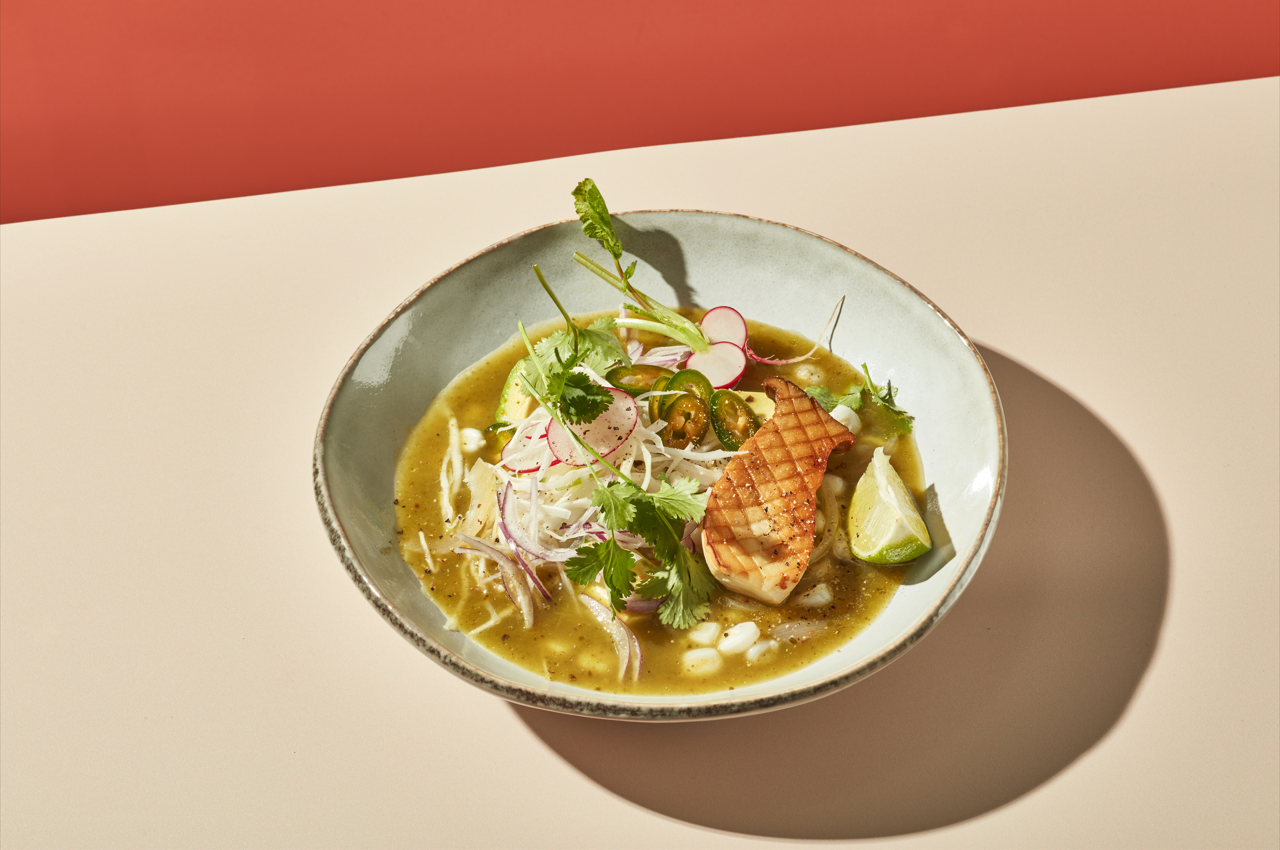

Congratulations to the winners of the The Future Menus Contest: Low Waste Menus! We received tons of entries that tackle the problem of food waste sponsored by Unilever Food Solutions.
Low Waste Menus is one of the five trends identified by the Unilever Food Solutions 2024 Future Menus Report. Based off of extensive research and expertise, the report is a rich resource for foodservice professionals looking to ensure their menus are future-ready now! Download the report here.
The prompt for the contest was to maximize the potential of your ingredients by and turning your waste into an original winning dish alongside products from Unilever Food Solutions. There were so many incredible entries that found multiple uses for a single ingredient, used every part of the plant or animal, brought under-utilized or byproduct ingredients into the kitchen, and more. Our judges had a truly challenging task to determine the winners, but after careful deliberation, considering presentation and techniques described and displayed, the following entries emerged as the winners!
3 GRAND PRIZE WINNERS
Each of these chefs will receive a $4,500 USD cash prize, a $250 gift card to Chef’s Roll Apparel, and a $250 gift card to Korin


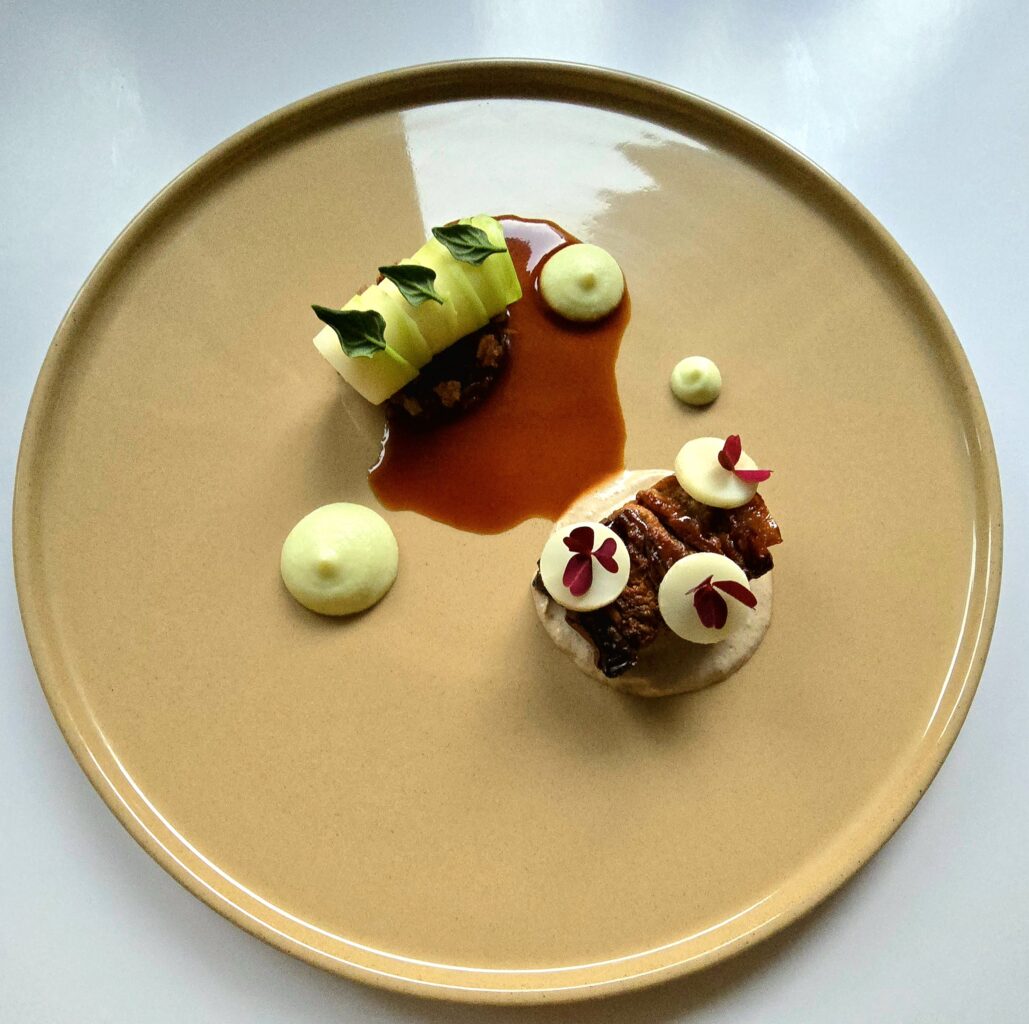
10 HONORABLE MENTIONS
Will each receive a $400 gift card to Korin
Mirepoix Pot Pie
In preparing stocks, broths, and some other dishes like roasts and braises, there is often discarded aromatic vegetables that were used to flavor the base of the dish that are not served along with it. Called mirepoix, this mix of onion, carrot, celery, and garlic is still full of life, even after cooking. Here, I’ve blended the vegetables from a vegetable stock to create a savory filling for a pot pie, but you can use this same principle with any mix of cooked vegetables. If they come from a roast or other “dry-heat” cooking method, you may need to add some stock or water to blend.
Tallow is the fat from rendered beef or mutton. In restaurants, tallow most often comes from beef, and it is frequently discarded simply because there is such an overabundance of it. Rather than waste what is a flavorful and inexpensive ingredient, I’ve used it in place of high-price butter to roll into puff pastry dough. When baked, it has the familiar texture and appearance, with a rich, more savory flavor that I love for this pot pie.
Featured Product Used: Knorr Professional Ultimate Base and Sir Kensington’s Classic Ketchup

Beet Tartare with Beet Top Pesto
Cooking root to stem is an important practice not only to lower waste, but also to save money. This beet tartare is paired with a beet-top pesto in order to use the entire plant. The roasted beets are tossed in a miso-dijon dressing featuring Knorr Professional Vegetable Stock and Hellman’s Vegan Mayo Dressing and Spread. There is also a dijon-aioli around the plate for additional flavor. To lower food miles, the beets were purchased from a local farm and the herbs grown at home. This dish is a great example of creating a low-waste menu item that is plant-based and delicious.
Featured Product Used: Knorr Professional Liquid Concentrated Base and Hellmann’s Vegan Mayo Dressing and Spread
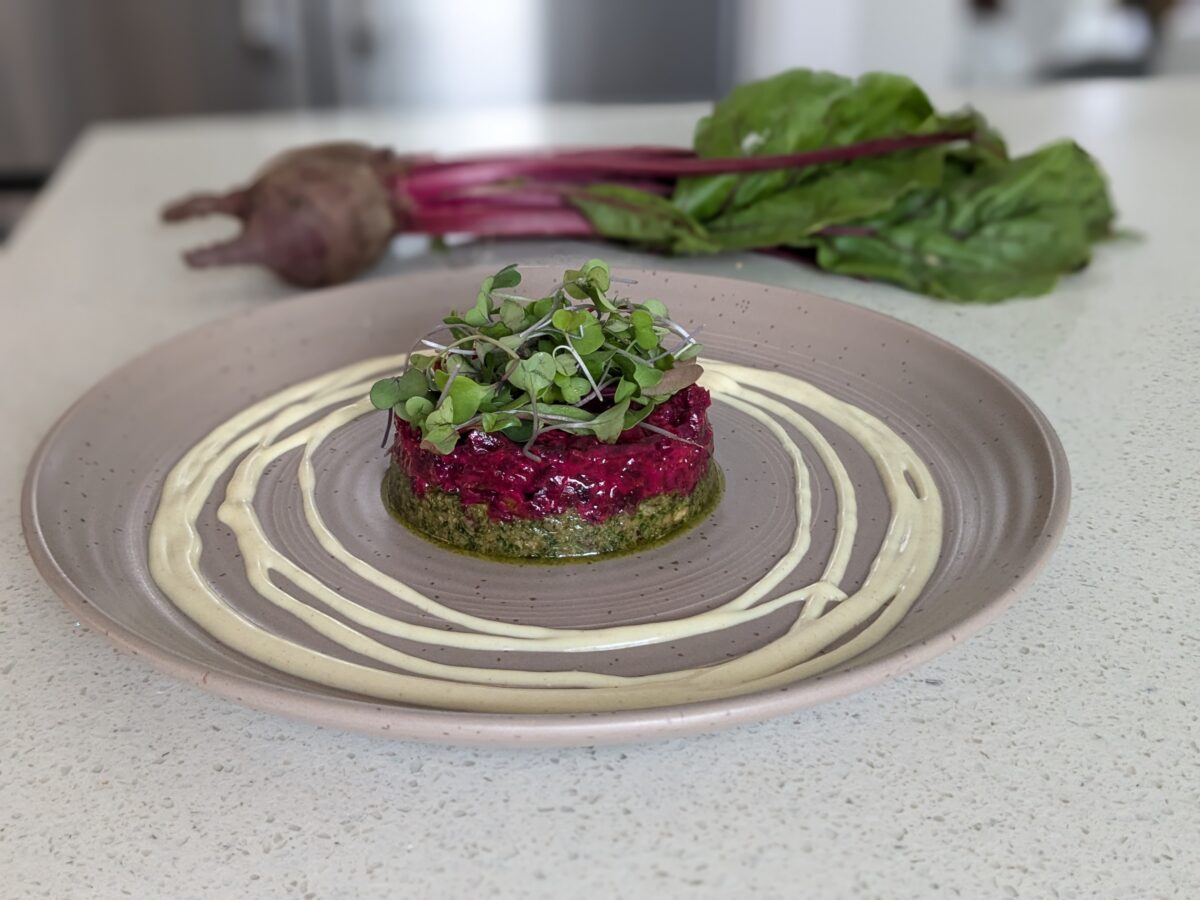
Melon Sorbet
This sorbet is a celebration of Californian cantaloupe, where I utilize all parts of the fruit’s rind, flesh, and seeds along with Indian spices, summer honey, Knorr Professional Caldo de Vegetable, and moringa powder. -I prepared a puree from the cantaloupe rind, adding water and Knorr Professional Caldo de Vegetable to create a thin concentrate, which I then shaped to mimic the cantaloupe rind. The flesh puree was used as the base for the sorbet, enriched with summer honey and spices such as chaat masala, black salt, and red chili powder. The melon seeds were toasted and marinated in summer honey and Himalayan pink salt for added texture and flavor.
the whole preparation served as a sorbet in shape of mock melon wedge on top of lentil and pistachio crumble. This process not only minimized fruit waste but also increased the product yield, making it both cost-efficient and sustainable.
Featured Product Used: Knorr Professional Caldo de Vegetales
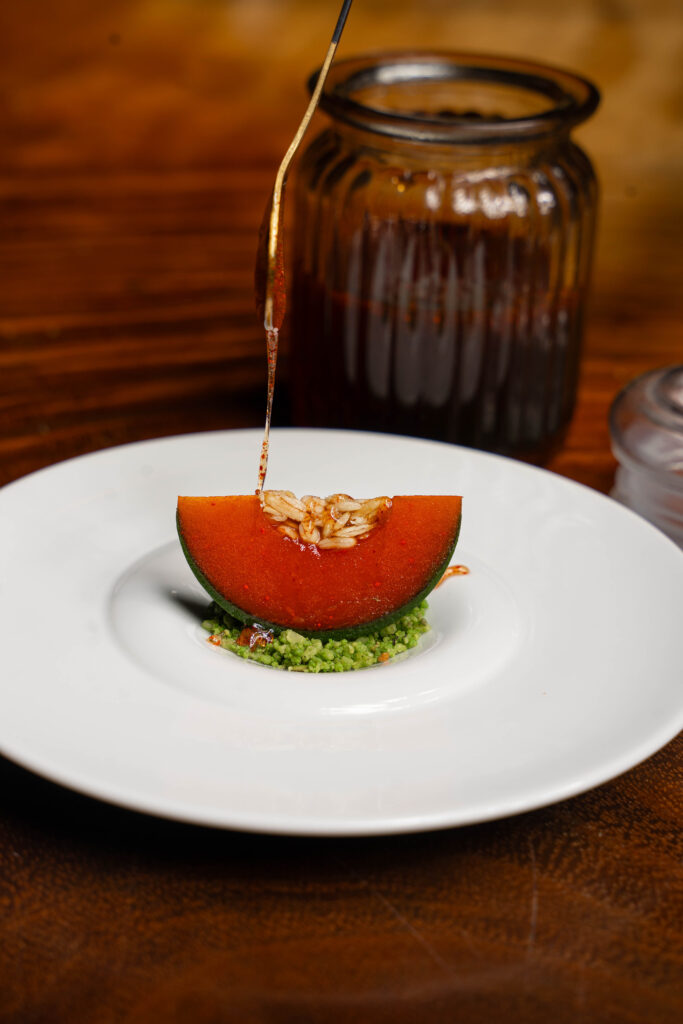
Watermelon “Matcha” Mochi Cake
An entire seedless yellow watermelon has been used to create this eye catching dessert: from flesh to rind to skin. The Bright green “matcha” that dusts the cake is the skin of a yellow watermelon, peeled and dehydrated at 125 degrees F for 24 hours before grinding to a fine powder and mixed with confectioners sugar. The yellow watermelon flesh was juiced, strained and reduced turning it into a syrup which was spiked with Makrut lime leaf, lime juice and Galangal before using it to candy thin strips of watermelon rind as well as fill the center indentation of the cake. The rind was then coated in vanilla sugar and used to top the cake and provide a sweet and sour addition to every bite. The cake base was made with Hellmann’s Mayonnaise instead of oil to enrich and moisten the crumb texture of this provocative cake
Featured Product Used: Hellmann’s Real Mayonnaise

Beef Tenderloin Tail Mosaic
Prosciutto | Vegetable Ash | Cowboy Crust | Everything Puff | Truffle Herb Hellman’s Mayo | Creamed Rainbow Chard & Leek | Fondant Potato Mushrooms | Herb & Chard Stem Chimichurri | Left Over Micro Greens & Flowers
Filet scraps after cutting steaks for service rolled with vegetable scrap ash cowboy crust & prosciutto. Mushroom Potato Fondant scraps after spiralizing potatoes for fries you get this potato end with a stem that looks like a mushroom. Hellmann’s Mayo Truffle Aioli (used as sauce on plate & brushed on puff pastry to get better color and adhere the everything seasoning). Truffle & Everything Seasoned Puffed Pastry Half Ring. Vegetable scraps were turned into an ash & cowboy crust for the steak. Chimichurri utilizing fresh herbs & chard stems. All herb scraps colored the cream for the creamed leeks & Swiss chard. Some of the cream was whipped and added to the aioli to lighten & freshen.
Featured Product Used: Hellmann’s Real Mayonnaise

Zero Waste Roasted Pig’s Head
The pig’s head is sadly considered a byproduct, but prepared the right way it can be a delicious treat and fun team building pig picking experience. My loyal butcher sells me the whole head for $18, and it will feed up to 10 people! We brine it for 4 days, braise it for 12 hours, remove the skin, then caramelize it in an agrodolce glaze (we use the white wines that have been open too long to make the glaze). Served with seasonal accoutrement, this offering featured a sauerkraut we made from the rinds of watermelon served elsewhere on the menu, and a preserved plum bbq.
Featured Product Used: Sir Kensington’s Classic Ketchup and Hellmann’s Extra Heavy Mayonnaise

Casoncelli, Mushroom Stems, Garden Chives, and Beet Gomadare
I run a Asian American tavern in Columbus called Cobra with a focus on handmade noodles and pasta. We use a small mushroom grower called marion mushrooms and am always finding ways to support them and use their product on our menus. We always end up with loads of mushroom feet and stems that have very little use besides broth. I incorporated these as both a filling and a garnish, and even used some of the baby mushrooms on the feet. The filling is ground mushroom stems where I incorporated Knorr Chicken de Tomate Base as well as Sir Kensington’s Ketchup for a rich balanced pasta filling. I also used the stems for a crispy topping mixed with Vietnamese mountain garlic and toasted sesame. It sits in a gomadare sauce made with golden beet trimmings that usually go in the trash. We finally compliment all of this with budding garlic chives and their flowers grown right in our back garden with zero footprint and lots of flavor.
Featured Product Used: Knorr Professional Caldo and Sir Kensington’s Classic Ketchup

Duck Poutine
I used the whole duck including the meat, bones, rendered fat, skin and duck livers to create this duck poutine with crispy skins, duck fat fried whole baby smashed potatoes. The gravy was made with both Caldo de Pollo, brown gravy mix and vegetable scraps and duck bones.
Featured Product Used: Knorr Professional Caldo and Knorr Professional Brown Gravy

Brie Gratin Bread Bowl, Shrimp Ball, Shrimp Butter
This dish is packed with all of the umami and nutrients of the shrimp (white shrimp) and none is low-wasted. Stir-fry shrimps heads, shells and tails then add unsalted butter to simmer over low heat. Slowly transfer the flavor and color of the shrimp to the butter to make shrimp butter. After making shrimp butter, crush heads and shells with a blender finely then squeeze. Mix squeezed shrimp heads and shells into chopped shrimp meat, Hellmann’s Real Mayonnaise, tomato, herbs and Cajun spice to make shrimp balls. (The squeezed heads and shells are also used without being thrown away because the heads and shells still contains nutrients and taste even after crushed and squeezed. It is finely ground so there is no problem with the texture even if you mix it and eat it.)
I made a white sauce with shrimp butter, to add Knorr Professional Caldo de Vegetales to make it even richer and more flavorful also. The inside of the bread is hollowed out and crushed (use as fresh breadcrumbs) to use for making shrimp balls. Spread shrimp butter all over the bread, put shrimp accented white sauce and brie cheese inside the hollowed out part of bread and bake.
When spread the shrimp butter on bread and toast, the fragrant of shrimp comes up and whet your appetite. The top part of the sliced bread is deep fried to make spiced sticks as the side, palate cleansing . Now you can enjoy all of part of the shrimp (white shrimp) and bread.
Featured Product Used: Knorr Professional Caldo de Vegetales and Hellmann’s Real-Mayonnaise
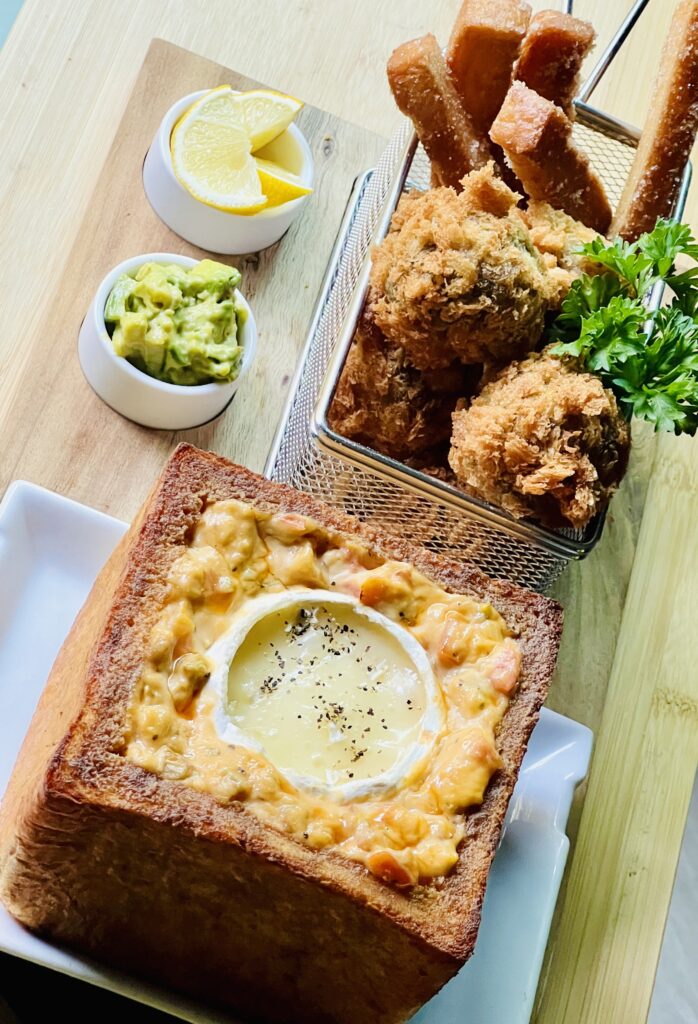
Sourdough Bread Reste Onion Tart
Utilizing our leftover reste and sourdough bread waste is an important aspect and a cornerstone to our overall fermentation program in house. We make marmite out of the bread lee’s, from there we take that leftover reste and make pate brisse, sourdough bread miso, garum and ferment inoculation. The braised onions and miso are blended together, placed inside and baked within the sourdough reste pate brisse. Finished with some of our lacto fermented tomato scraps and a dusting of the vegetable scrap buillion powder we make from our vegetable liquid amino base we make. The plate is underlined with a dressing of Hellmann’s Mayo, our chile lee’s (from our hots auce production) and our spent lemon miso (lemon pulp leftover from making lemon juice and lemon oil with the skins, as well as a dash of our marmite sauce (again part of the sourdough process).
Featured Product Used: Hellmann’s Real Mayonnaise
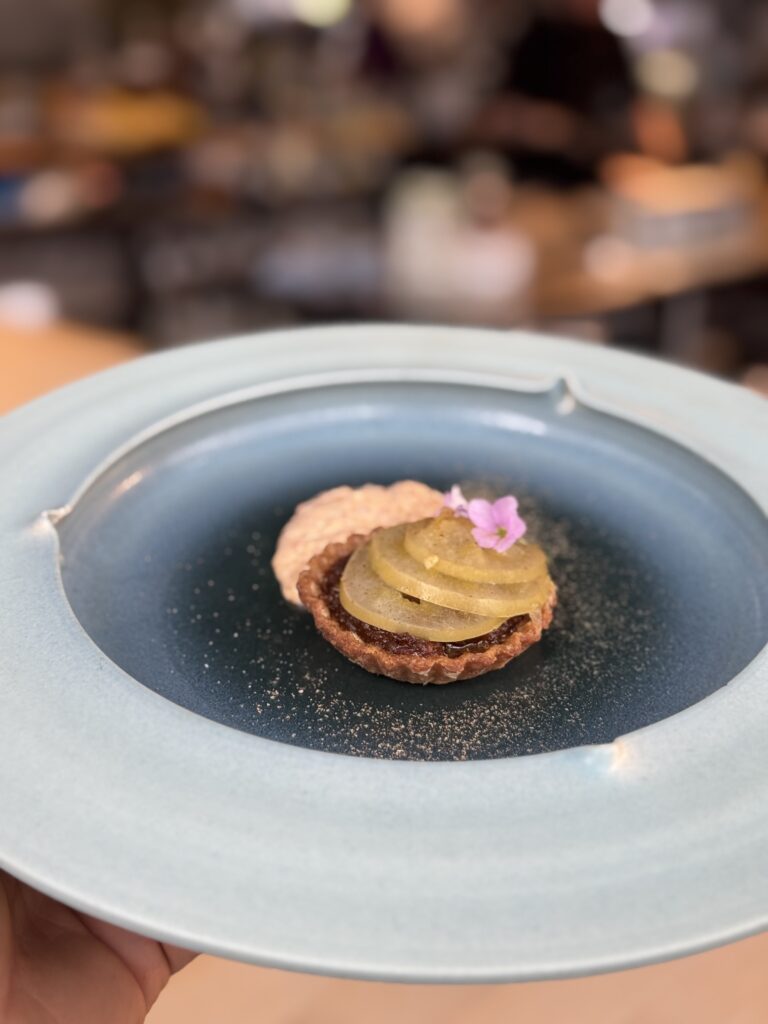
Thank you so much to everyone who participated in this contest! Stay tuned for the next Future Menus contest launching very soon – another chance to win BIG.

